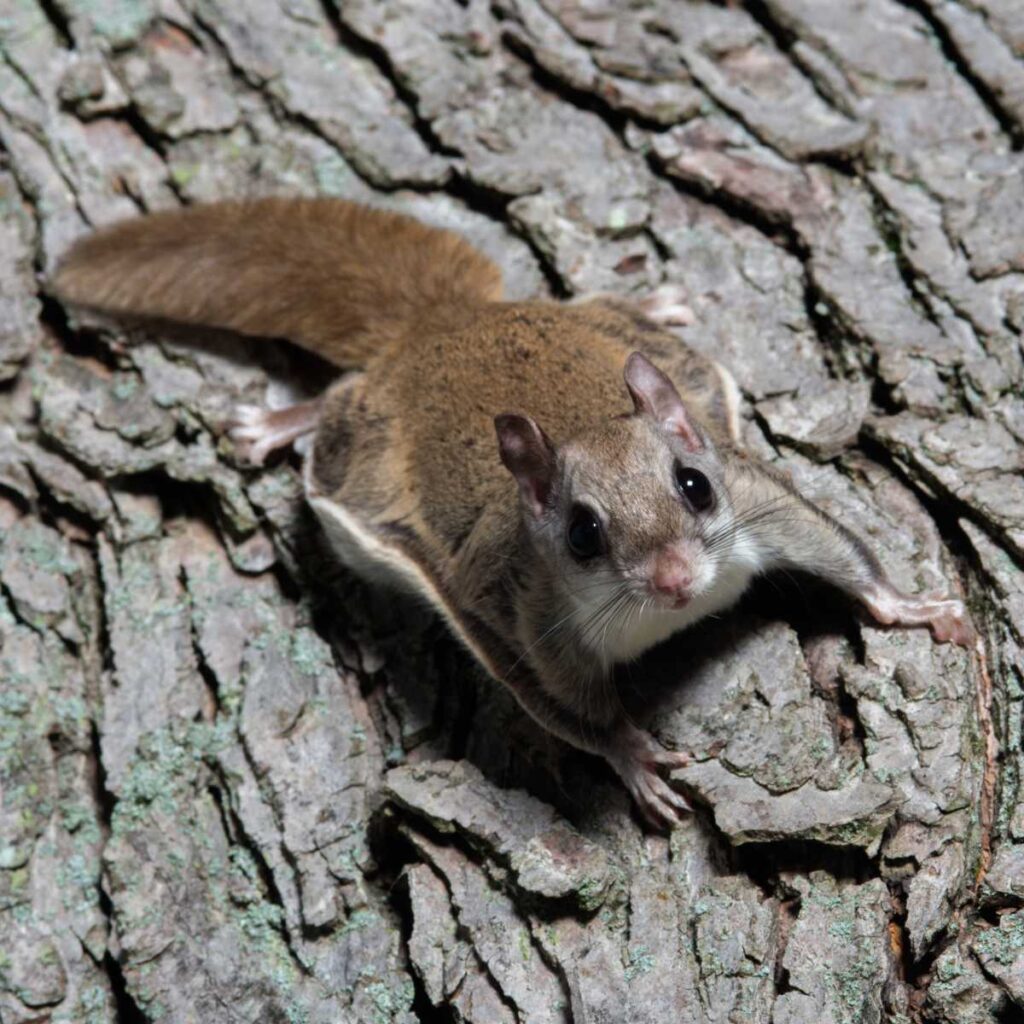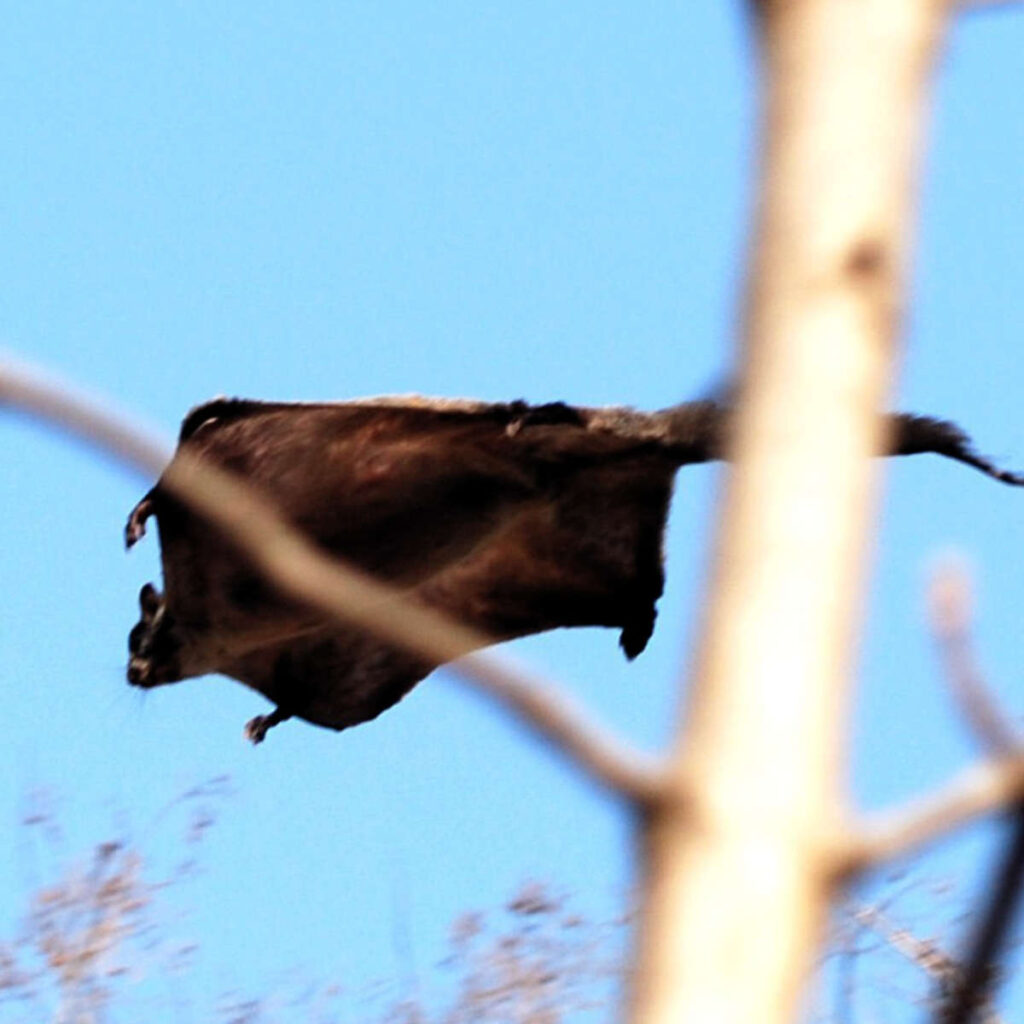Last Reviewed and Updated on March 2, 2023
Flying squirrels can be found in many parts of the world. They are one of the rare mammals that you can spot gliding through the air. These small, nocturnal animals have a number of unique adaptations that make them well-suited to their lifestyle, including large eyes, patagia, and a remarkable ability to navigate in the air. Read on and learn some interesting facts about flying squirrels.

About Flying Squirrels
Flying squirrels (Pteromyini or Petauristini) are a group of rodents that have the ability to glide through the air. They are one of the few mammals with this ability.
There are more than 50 known species of flying squirrels found around the world, and they are typically found in forested areas. Some species are native to North America, some to Northern Eurasia and some to India, and some to other parts of Asia.
Flying squirrels are arboreal animals, meaning they spend most of their time in trees.
They are usually nocturnal, so they spend most of their time in the trees at night, sleeping during the day. This way, they avoid birds of prey.
Flying squirrels are similar to other squirrels with some adaptations. They are generally small in size, but some species may be over two feet long, including the tail. The color varies between species, from gray to brown. They are similar to colugos, although the two are not closely related.
These squirrels are omnivores, and their diet varies depending on the species and the availability of food in their habitat. They primarily eat nuts, seeds, berries, and other plant materials, but depending on the species, they also eat insects, bird eggs, and insects.
Flying squirrels typically breed once a year during February and March. Males and females usually come together only to mate. The female gives birth to a litter that she cares for in a nest.
Many species of flying squirrels are threatened by habitat loss. Some species are also hunted for their fur or as a food source. Several species are listed as endangered or vulnerable by the International Union for Conservation of Nature (IUCN).
Interesting Facts About Flying Squirrels
Ready to learn some fun facts about flying squirrels? Read on!

Pratik Jain, CC BY-SA 3.0
Love animal oddballs? You will love our list of the 100 weirdest animals on the planet or our extensive list of jaw-dropping animal facts.
1. Flying squirrels can’t fly
While their name suggests they can fly, this isn’t actually true. Only birds and bats are capable of true flying. Flying squirrels can’t fly, but they can glide through the air.
Flying squirrels glide through the air by using an adaptation known as patagia. Patagia is a membrane of skin that stretches between the front and back legs of gliding mammals. The patagia are connected to the squirrel’s ankles, wrists, and body, forming a wing-like structure that enables them to glide through the air.
To make a glide, a flying squirrel will climb to a high point, such as a tree branch, and launch itself into the air.
2. They can make long glides up to 300 feet, and some even more
Flying squirrels can make impressive glides with distances up to 300 feet / 90 meters often recorded.
The red giant flying squirrel can glide up to at least 330–490 ft / 100-150 m. A report indicates it can glide up to 1,480 ft / 450 m (Mammals of South Asia, Volume 2, by AJT Johnsingh, N. Manjrekar).
3. They control their flight with cartilage wrist bones
They can change the direction and speed of their flight by changing the position of their limbs, which are largely controlled by small cartilage wrist bones. This specialized cartilage is unique to flying squirrels and is not present in other gliding mammals.
4. Flying squirrels can make 180-degree turns in mid-air
They are nocturnal, and this helps them avoid many birds of prey, but not owls (and some other predators). They are capable of making quick, impressive turns which makes them very agile in the air. This helps them evade predators.
5. The red giant flying squirrel is likely the largest flying squirrel
The red giant flying squirrel or common giant flying squirrel (Petaurista petaurista) is one of the, if not the largest, species of flying squirrel. This squirrel has a body length of 11 to 1 ft 9.5 in / 28.5 to 55 cm and a tail length of 1 ft 1.5 into 2 ft 1 in / 34 to 63 cm. It can be quite heavy, too, as it weighs between 2.2 to 7.1 lb / 990 to 3,200 g. The Western woolly flying squirrel is about the same size.
On the other end is the dwarf flying squirrel, which is considered to be the smallest of all species. Their bodies measure only about 2.8 to 3.5 inches / 7 to 9 cm and tails about 2.4 to 4 inches / 6 to 10 cm.
6. North American flying squirrels are fluorescent
Yep, flying squirrels glow in the dark under UV lights. This was observed by chance in 2019 when it was discovered that flying squirrels fluoresced pink.
This was then confirmed to be the case for all North American flying squirrels (study: Ultraviolet fluorescence discovered in New World flying squirrels (Glaucomys)). Regular squirrels aren’t fluorescent. It is not known what the purpose of this is.
7. When they are born, their internal organs are visible through their skin
When they are born, they are mostly hairless. Their skin is transparent enough for their internal organs to be easily seen. They become fully developed in about five weeks, and after two and a half months, they are already adept at gliding and are ready to leave the nest.
8. Like most other squirrels, they don’t hibernate
Most squirrels do not hibernate in the traditional sense. Instead, they may go through a period of reduced activity during the winter months, called torpor, to conserve energy.
Flying squirrels may also enter torpor, but studies suggest it is lighter than with other squirrels (study: Seasonal energetics and torpor use in North American flying squirrels by M. N. Olson, J. Bowman, G. Burness).
9. When not in the air, they may look like regular squirrels
When they are not gliding, they pull the membrane close to their bodies and may look just like a regular squirrel.
